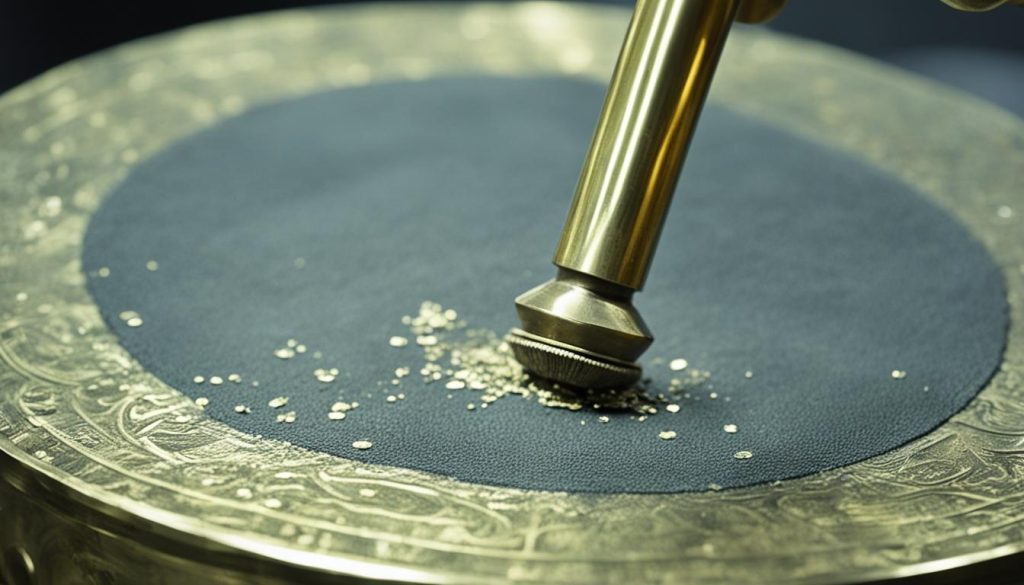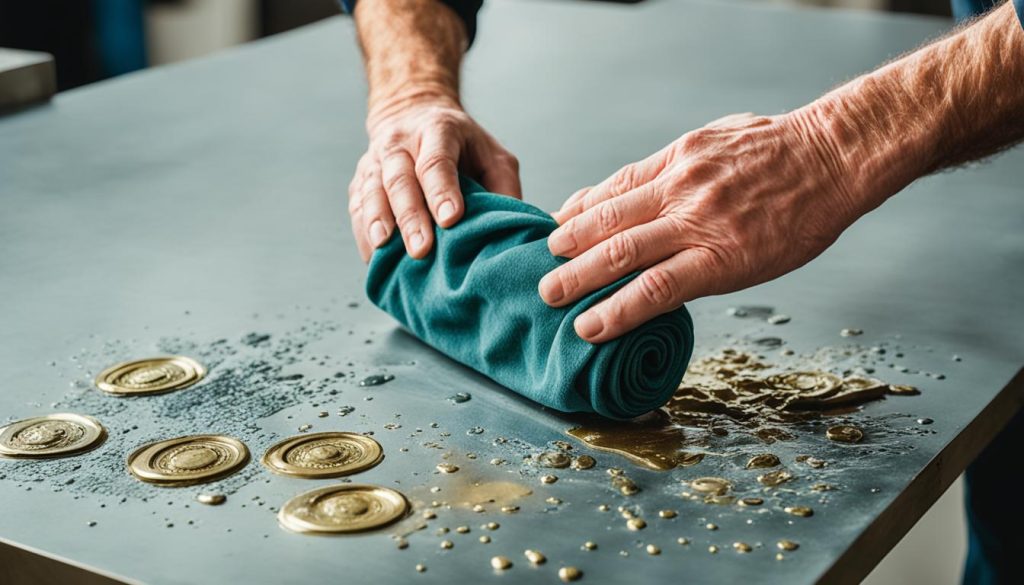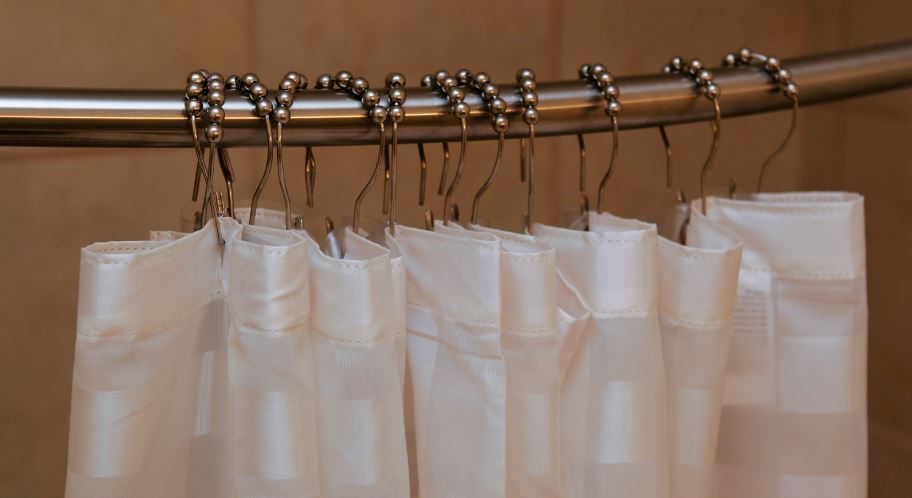Brass, with its classy appearance, is a popular metal used in homes. However, heavily corroded brass can lose its shine and allure. In this comprehensive guide, we will provide you with effective tips and techniques of how to clean heavily corroded brass and restoring its lustrous beauty.
Things to Note Before You Start
Before attempting to clean heavily corroded brass, there are a few important factors to consider. Firstly, you need to determine whether the object is made of solid brass or if it is brass plated. This is crucial because the cleaning methods may differ depending on the composition of the brass.
Another aspect to understand is the difference between corrosion and rust. While both involve the deterioration of metal, rust specifically refers to the corrosion of iron or steel. Brass, on the other hand, corrodes due to its copper content.
To ascertain if an object is solid brass, you can use a simple test involving a magnet. Solid brass is nonmagnetic, so if the object is attracted to the magnet, it is likely brass plated or made of a different metal altogether.
If the brass is heavily corroded, stronger cleaning solutions may be required. In such cases, it is essential to work in a well-ventilated area and take precautions such as wearing protective gloves to guard against strong chemicals.
Test the magnetism of the object to determine if it’s made of solid brass.
Required Materials for Cleaning Brass
To effectively clean heavily corroded brass and restore its shine, you will need the following materials:
- Rag or cloth
- Warm soapy water
- Fine steel wool or toothbrush
- Paint stripper
- Acidic solution (such as vinegar or lemon juice)
- Brass cleaner
- Protective gloves
These materials are essential for removing corrosion from brass. Let’s take a closer look at each material and its role in the cleaning process.
Rag or Cloth
A soft rag or cloth is necessary to wipe away dirt and grime from the brass surface. Choose a lint-free cloth to avoid leaving behind fibers that could scratch the metal.
Warm Soapy Water
Using warm soapy water helps break down dirt and grease on the brass. Prepare a solution by mixing a mild dish soap or a brass cleaning soap with warm water.
Fine Steel Wool or Toothbrush
For stubborn corrosion, fine steel wool or a toothbrush with soft bristles can be used to scrub the brass surface gently. Avoid using abrasive materials that can scratch or damage the brass.
Paint Stripper
If the brass has a layer of paint or lacquer, a paint stripper may be required to remove it. Follow the manufacturer’s instructions when using a paint stripper and ensure proper ventilation.
Acidic Solution
An acidic solution, such as vinegar or lemon juice, can help dissolve stubborn corrosion on brass. These natural acids work effectively but should be used with caution and in well-ventilated areas.
Brass Cleaner
A commercial brass cleaner specifically designed for removing corrosion can provide excellent results. Follow the instructions on the cleaner and use it according to the severity of the corrosion.
Protective Gloves
When working with chemical cleaners or acidic solutions, it is essential to protect your hands with gloves. Choose gloves that provide adequate protection and are suitable for handling the cleaning materials.
By gathering these materials, you’re ready to tackle the cleaning process and restore the shine to your heavily corroded brass items.

How to Clean Heavily Corroded Brass?
To restore heavily corroded brass and bring back its shine, follow these steps:
- Removing Wax or Coating: Start by removing any wax or coating on the brass surface. Use a soft cloth or rag to gently wipe away the wax or coating.
- Applying Acidic Paste: Apply an acidic paste to the corroded areas of the brass. Mix vinegar or lemon juice with salt to create a paste. Use a soft cloth or brush to apply the paste onto the corroded parts.
- Scrubbing with Steel Wool or Toothbrush: Scrub the brass surface using fine steel wool or a toothbrush. Gently scrub in circular motions to remove the corrosion and reveal the underlying brass shine. Be careful not to apply too much pressure as it may damage the brass.
- Washing with Warm Soapy Water: After scrubbing, wash the brass with warm soapy water. Use a mild dish soap and water to clean the brass surface thoroughly. Rinse off any soap residue with clean water.
- Polishing with Brass Cleaner: Finish the cleaning process by polishing the brass with a suitable brass cleaner. Apply the cleaner onto a soft cloth and gently rub it onto the brass surface. Follow the instructions on the cleaner’s packaging for best results.
Each step in this cleaning process plays a vital role in eliminating corrosion and restoring the brass’s shine. By following these steps, you can effectively clean heavily corroded brass and bring back its original beauty.

Preventing Brass Corrosion
Regular light polishing is essential to prevent brass corrosion. By regularly polishing your brass items, you can maintain their shine and protect them from tarnishing. Consider using a shop-bought or DIY polish to keep your brass looking its best. A brief monthly polishing routine can go a long way in preserving the beauty of your brass objects.
To provide added protection against tarnishing, you may also consider lacquering your brass items. Lacquer forms a protective barrier on the surface of the brass, preventing it from coming into contact with air and moisture. This can significantly reduce the risk of corrosion. However, it’s important to note that lacquer may require reapplication over time, especially in high-use areas.
“Regular light polishing is essential to prevent brass corrosion.”
For old or ornate brass items that require special care, occasional professional cleaning can be beneficial. Professional cleaners have the expertise and tools to safely clean and restore old or intricate brass pieces without causing damage. Consulting a professional cleaner is particularly recommended for valuable or sentimental brass items that you want to preserve.
Professional Cleaning Benefits for Old or Ornate Brass Items:
- Expert knowledge and experience in cleaning delicate and intricate designs.
- Ability to remove stubborn corrosion and tarnish without causing harm.
- Access to specialized cleaning solutions and techniques.
By following these preventive measures, you can minimize the risk of brass corrosion and enjoy the long-lasting beauty of your brass items.

| Preventive Measures | Benefits |
|---|---|
| Regular light polishing | Maintains the brass’s shine and prevents tarnishing |
| Lacquering brass items | Provides an additional protective barrier against corrosion |
| Occasional professional cleaning | Safe and effective cleaning for old or ornate brass items |
Effective DIY Brass Cleaning Methods
If you have heavily corroded brass items that you want to restore, there are several effective DIY methods you can try at home. These methods use everyday household ingredients and can help remove corrosion and bring back the shine to your brass.
1. Using White Vinegar
White vinegar is a versatile ingredient that can be used for various cleaning purposes, including brass. To clean heavily corroded brass, mix equal parts white vinegar and salt to create a paste. Add flour gradually until the mixture reaches a thick consistency. Apply the paste onto the corroded areas of the brass and let it sit for about an hour. Gently scrub the paste with a soft cloth or toothbrush, then rinse the brass with warm water and dry it thoroughly.
2. Soap and Water
For minor tarnishing on brass, a simple solution of soap and water can help. Fill a basin or sink with warm water and add a few drops of dish soap. Immerse the brass item in the soapy water and scrub gently with a soft cloth or sponge. Rinse the brass thoroughly with clean water and dry it with a soft towel.
3. Lemon and Baking Soda
Lemons and baking soda are natural cleaners that can effectively remove tarnish from brass. Cut a lemon in half and sprinkle baking soda onto one of the lemon halves. Rub the lemon with baking soda onto the heavily corroded areas of the brass. Leave the lemon juice and baking soda mixture on the brass for a few minutes, then rinse it with warm water and dry it with a clean cloth.
4. Flour and Water Cleaning Paste
A mixture of flour and water can be used to create a cleaning paste for heavily corroded brass. In a bowl, combine equal parts flour and salt, then gradually add enough white vinegar to form a thick paste. Apply the paste onto the corroded areas of the brass and let it sit for about an hour. Gently scrub the paste with a soft cloth or toothbrush, then rinse the brass with warm water and dry it thoroughly.
Remember, always test the cleaning method on a small, inconspicuous area of the brass before applying it to the entire surface. This will help you ensure that the method does not cause any damage or discoloration to the brass. With these DIY cleaning methods, you can restore the shine to your heavily corroded brass items and enjoy their beauty once again.
| DIY Brass Cleaning Methods | Materials Needed |
|---|---|
| White Vinegar and Salt Paste | White vinegar, salt, flour |
| Soap and Water | Dish soap, warm water |
| Lemon and Baking Soda | Lemon, baking soda |
| Flour and Water Cleaning Paste | Flour, salt, white vinegar |
Using Commercial Products and Tools
In some cases, heavily corroded brass may require the use of commercial brass cleaning products. These products typically contain ingredients that can cut through corrosion and grime, making them highly effective for restoring the shine to tarnished brass items.
When choosing tools for cleaning brass, it’s important to select the right ones for the job. Depending on the level of corrosion, different tools may be required to tackle stubborn stains and deposits. Some commonly used tools include:
- Sandpaper: This abrasive material can be used to gently remove surface scratches and tarnish from brass objects.
- Steel wool: A fine-grade steel wool can be effective in removing tough corrosion on brass surfaces. Be sure to use with caution as it can scratch the metal if applied too vigorously.
- Brass brushes: These brushes have soft bristles specifically designed for cleaning brass. They are ideal for reaching intricate details and crevices on brass items.
For complex cases of corrosion or valuable and delicate brass items, it may be advisable to seek the assistance of professional cleaners. These experts have the knowledge and experience to safely restore heavily corroded brass while preserving its integrity.
Conclusion
To conclude, cleaning heavily corroded brass is not an impossible task. By following the tips and techniques mentioned in this guide, you can restore the shine of your brass items and prevent further corrosion. It is crucial to regularly maintain your brass items to ensure their longevity and aesthetic appeal.
Regular maintenance is key to preventing brass corrosion. Make it a habit to lightly polish your brass items on a monthly basis using a shop-bought or DIY polish. This simple step can go a long way in preserving the shine of your brass and protecting it from corrosion.
Furthermore, considering lacquering your brass items can provide added protection against tarnishing. While lacquer may require reapplication over time, it is worth the effort to keep your brass looking pristine. For older or ornate brass pieces that require specialized care, occasional professional cleaning can prevent corrosion from setting in and damaging the items.
In conclusion, by following the cleaning methods outlined in this guide and practicing regular maintenance, you can revive heavily corroded brass and enjoy its timeless beauty for years to come.







